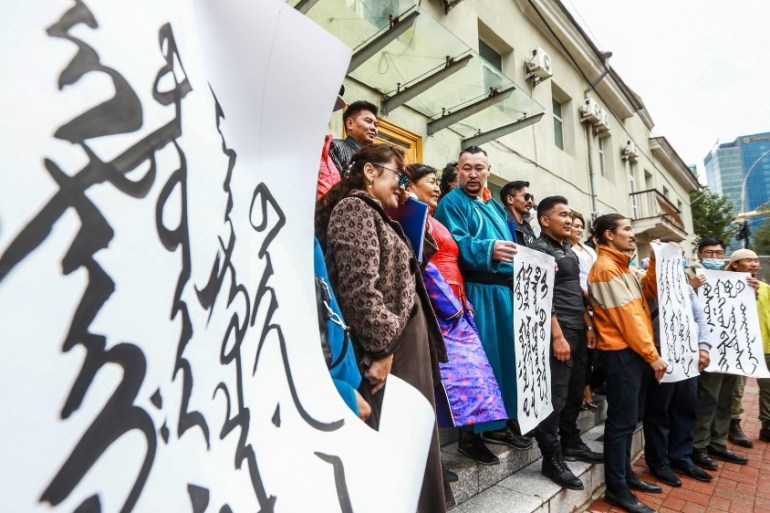The Chinese Economy is Sixty Percent Smaller Than We Thought
Posted on October 27, 2022
China’s Economy is 60% smaller than we thought. At least, that is the implication, if we are to believe the research presented in this research paper by Professor Luis Martinez from the University of Chicago.
This would mean that instead of soon becoming the largest economy in the world, China’s economy is only about a third of the size of the mighty U.S. economy. It also means that predictions, such as those made by Billionaire Investor Ray Dalio, that China is soon to overtake the U.S. as the world’s next superpower, are way overblown. Finally, having much lower GDP also means that China’s debt levels are actually much higher, relative to the size of its economy, meaning that its debt-fueled property bubble is much more dangerous than we thought.
But, this all depends on the answer to one question. Can you trust this research paper more than China’s official GDP figures? Well, for you to make up your mind about that, I’ll first tell you why China’s official GDP figures are so problematic. Then, I’ll show you the evidence that this paper presents, and how I used it to calculate China’s real GDP number. After that, I’ll discuss both the strengths and weaknesses of the evidence against China’s official statistics plus what this greatly reduced GDP figure would mean for the global economy.
The Problem with China’s GDP statistics
Okay, so China’s official GDP figures, measuring the total spending in the economy, have actually been very controversial for a long time.
I mean, according to leaked documents, even China’s vice president admitted that
China’s GDP figures are “man-made” and therefore unreliable
You see, to calculate GDP, governments all around the world typically collect data on transactions in all sectors of the economy. But, the problem is that GDP growth is often seen as a measurement of success.
So, to stay in power, politicians need higher GDP numbers. And, Sure, they could get them by governing well, allowing the economy to grow. But, that is really hard work. It would be much easier to just get higher GDP numbers by just adjusting the numbers upwards a little bit every year.
However, the problem for politicians in democratic countries is that the statistical agencies responsible for recording GDP operate independently. For example, Donald Trump could not just walk into the U.S. [Bureau of Economic Analysis](https://www.bea.gov/data/gdp/gross-domestic-product#:~:text=Real%20gross%20domestic%20product%20(GDP,second%E2%80%9D%20estimate%20released%20in%20August.) and demand higher GDP growth numbers. And, even if he managed to pressure the statisticians there to fudge the numbers, this would likely find its way to the free press, making this quite an unattractive option for politicians in democratic countries.
But, what if you are a dictator that controls both the statistical office and the press. Now suddenly, it becomes quite attractive to adjust the numbers upwards, just a little bit every year.
Therefore, more authoritarian countries are likely to overstate GDP growth more.
At least, that is the main claim of this paper from professor Luis Martinez.
And, as a scientist, he backs up that claim with data, in this case from satellites.
The Evidence
Because, sure, rulers that control the statisticians and the press can easily manipulate GDP statistics. But, they cannot fake real economic activity. And, in our modern economies, real economic activity can be seen from space. Especially, when night sets and the lights go on.
So, to find out if authoritarians manipulate GDP statistics more, Martinez looked at 184 countries between 1992 to 2008 and compared the growth of lights at night in each country to the growth of GDP that each country reported.
What he found is that, as expected, when night-lights grew, all countries typically also reported that GDP grew. However, when making a distinction between autocratic and democratic countries, a clear pattern emerged. Autocratic countries typically reported a whopping 35% higher GDP growth numbers compared to night-time lights growth.
And for China specifically, Martinez states that, based on his analysis, China’s GDP growth between 1992 and 2008 was likely 4.9% per year, rather than its average reported growth of 6.3%.
But, frustratingly to us here at Money & Macro, Martinez didn’t calculate what that means for China’s GDP today. So, we decided to do that ourselves.
Calculating China’s GDP Today
Based how much authoritarian countries overstate GDP growth compared to night-light growth, Martinez produces what he calls a GDP deflator.
This GDP deflator is basically a number by which to reduce official GDP numbers each year based on how authoritarian a country is.
Using his deflator, we extended Martinez’s analysis to 2021.
And, while between 1992 and 2021, China reported sky high GDP growth between 14 and 8 percent. Martinez analysis suggests that China actually only grew between six and two percent.
Importantly, this means that instead of surpassing the USA as the largest economy in the world, China’s is still quite far away from it.
Now, don’t get me wrong, these are still really impressive growth numbers. On average, it was still quite a bit higher than the 4.1% that Trump was so proud of. And this growth was still enough for China’s economy to surpass that of Japan and become the second biggest economy in the world.
But, at this point you might say, Joeri, this paper, and your calculations, they look a bit rough around the edges. Why should I trust them over the official statistics provided by the Chinese government?
And yeah, there is some truth to that, in the sense that, this is a very rough calculation. Martinez himself even calls it a back-of-the-envelope calculation. And so, yeah, you should take these adjusted number with a big grain of salt. But, that being said, I do actually think that the adjusted numbers are closer to the truth than the official numbers for three reasons.
Pros, Cons & Implications
First, it’s important to mention that this paper has been critically assessed by dozens of economists. It has been presented at seminars at the University of Chicago and Illinois as well as at policy institutions such as the central bank of Chile and the World Bank. What’s more, it has been peer-reviewed and published by the prestigious Journal of Political Economy.
Second, Martinez has done a lot of checks to make sure that the finding that authoritarians consistently have higher GDP growth than night-light growth cannot be explained by some other factor. For example, you could imagine that geography has something to do with this relationship. Or perhaps most authoritarian countries were just less-developed economically in 1992 which changes their relation with night-time lights. Or perhaps, the structure of authoritarian economies is just different because their people move to cities less. Or, it could also be that they just rely on industries that produce fewer lights. Well, Martinez checked all of this and more, and it didn’t affect his main result. So, his analysis that authoritarians overstate GDP holds.
Now, at this point you might say, Joeri, okay okay. But, Martinez’s calculation of GDP was about the average manipulation of authoritarian regimes. It is not applicable to China. And, yeah, that could be true. So, I looked into it.
I started by examining why China’s own vice president would ever admit that he didn’t trust his own GDP numbers. And there it turns out that China is quite unique in that the central government used to set GDP growth targets for provincial governors.
And, if any of you have worked in a company with a growth target, you probably know that while they can be effective, they typically also produce a unwanted side effects. For example, economic research shows that sales targets in companies lead to bad sales, such as those sold at unsustainable discounts, as well as manipulated sales numbers. So it’s not surprising that, research has already shown that China’s GDP growth targets led to wasteful investment projects, and, more importantly for us, manipulated GDP numbers.
Similarly to Martinez’s study, another economist uncovered that in the years that Chinese provincial governors needed to be selected, there were huge difference between reported GDP figures for that province, and data that couldn’t be manipulated such as electricity consumption.
Even economic researchers from within China reported that provincial governors that hit their GDP growth targets typically got promoted, while those that didn’t got … the boot.
Finally, when I, myself, looked into the night light data of a paper published in Nature and compared that to World bank GDP data, I found that indeed China reported much higher GDP growth, compared to night-light growth than for example its more democratic rapidly growing and large neighbor India.
So yeah, there is a lot of evidence that China is manipulating its GDP data just as much, if not more than other autocratic countries.
And, that is why, with the caveat that this is an extremely rough calculation, it is my opinion, that China’s GDP is likely 40% of its official figure. Now, this still makes China’s economy the second largest in the world. But, it is only at 30 to 45 percent of the US’s economy, depending on how you measure it.
In any case, the Chinese economy is still very far from being number one, especially now that its economy is slowing down due to a property crisis. And, this means that China’s current economic problems could be much worse than we thought because debt to GDP is much higher, because GDP is much lower. What’s more, it has huge geopolitical implications in that China would be far less threatening to the USA than we thought.
But, what do you think? Are you as convinced by this research as I am? Or do you have a better explanation for why night lights in China don’t grow as fast as reported GDP. Let, me know in the comments.





